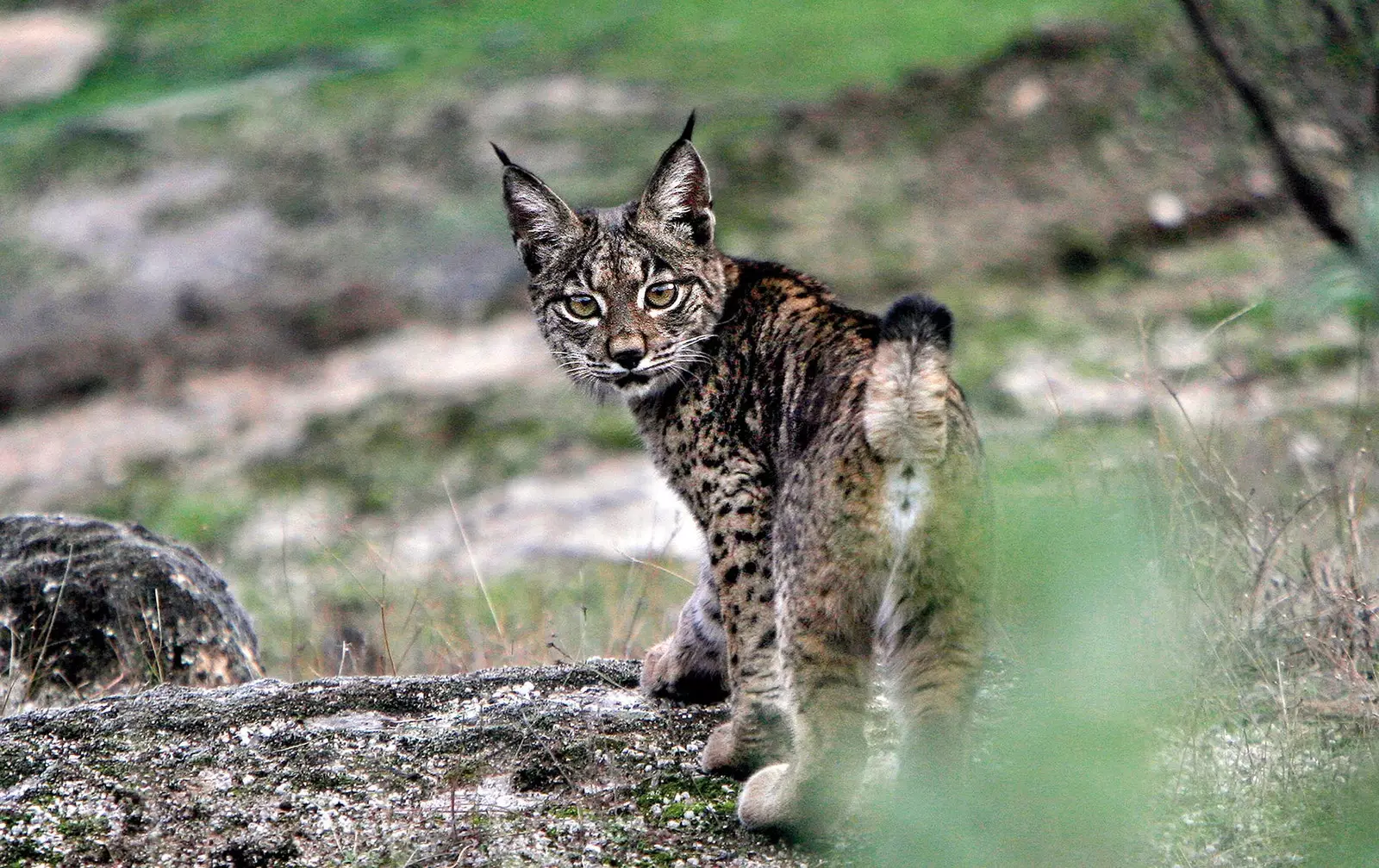
"I think I've seen a cute kitty..."
There were barely ninety copies of the Iberian lynx left, between the Sierra de Andújar and Doñana, at the beginning of the millennium. Today, twenty years later, the number has risen to nearly a thousand. Largely thanks to the work of the CBD-Habitat Foundation , a non-profit NGO specialized in the conservation of this and other species such as the Iberian imperial eagle, the black vulture or the Mediterranean monk seal.
From his hand we are ready to go after the tracks of this iconic animal, in order to see it with our own eyes. For this we move to El Encinarejo, a farm located in the Barranco de San Miguel, in the Sierra de Andújar (Jaén), next to the famous Sanctuary of Our Lady of the Head. With some five hundred specimens, this mountain range from Jaén supposes the largest focus of Iberian lynx today.
There we are received by Alex and Jess, a South African couple who decided two years ago to move to Andalusia to fulfill their common dream: acquire a farm in which to open a luxury accommodation where to offer activities related to nature.
Between them, the sighting of some of the Iberian lynx specimens that live in the 1,000 hectares that the enclosure covers, populated by oaks, pines and olive trees. The mansion, a haven of peace in a privileged location, will open its rooms to the public next November at a rate of 300 euros per person per night.
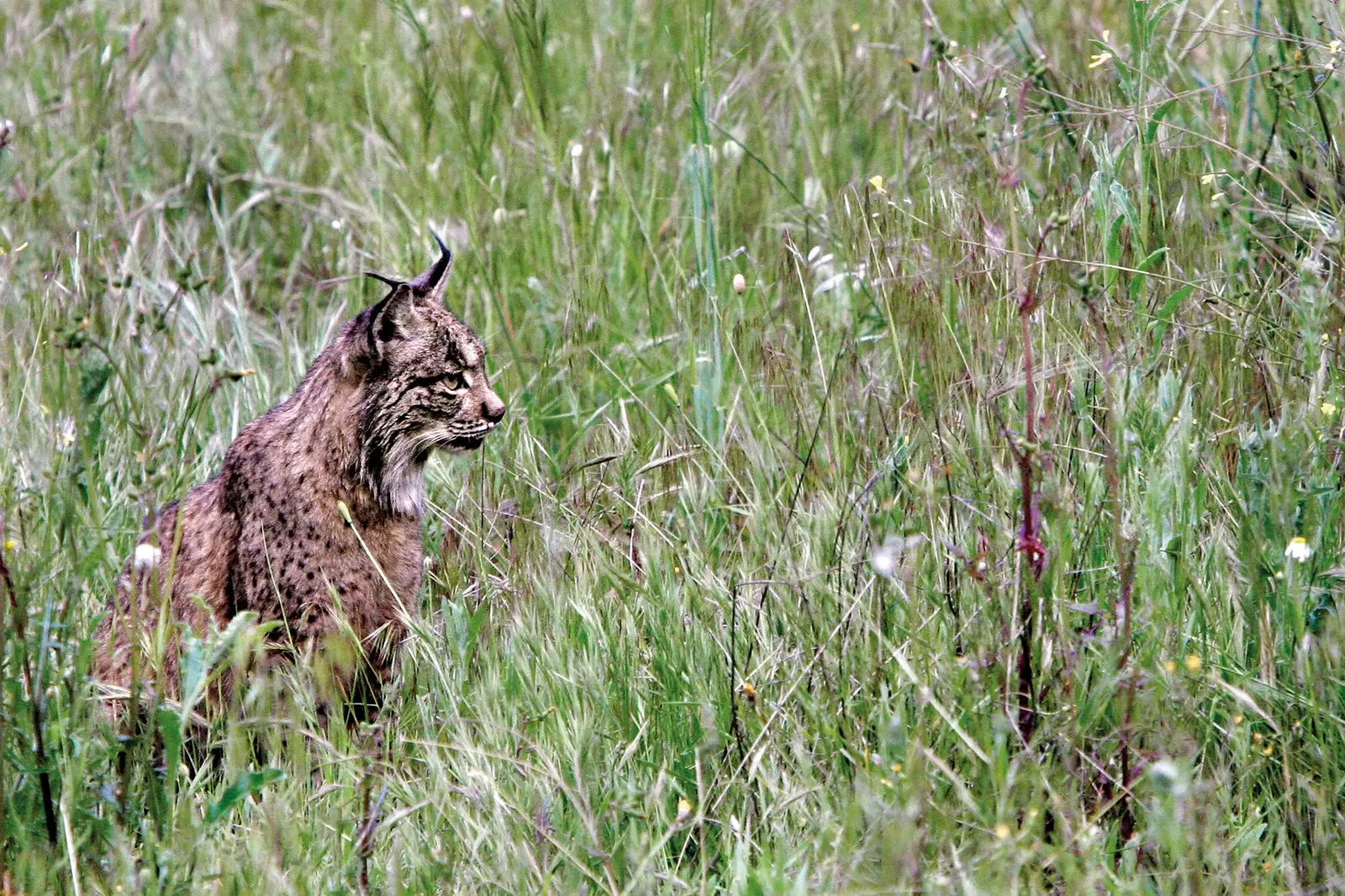
Iberian lynx
The ranch will also allow archery hunting or the sighting of many other animal species that live there: Partridges, pigeons, magpies, magpies, golden eagles, vultures, deer, badgers, wild boars...
And even, with a bit of luck, bison, since Alex (a lover of hunting) has released fifteen males and a female on his land to study with Ivone, a Dutch ecologist, the feasibility and environmental impact of introducing this species in Jaén.
Early in the morning, the small group of journalists who have been chosen to enjoy the experience also join Maribel, technician of the Lynx Project in the Junta de Andalucía.
And it is that this has been the key to the work of CBD in all these years. Being able to unite public agents (the Board, in this case), private (owners of private farms where many of the lynx specimens live) and the local population itself to pursue a common goal: the conservation of the Iberian lynx.
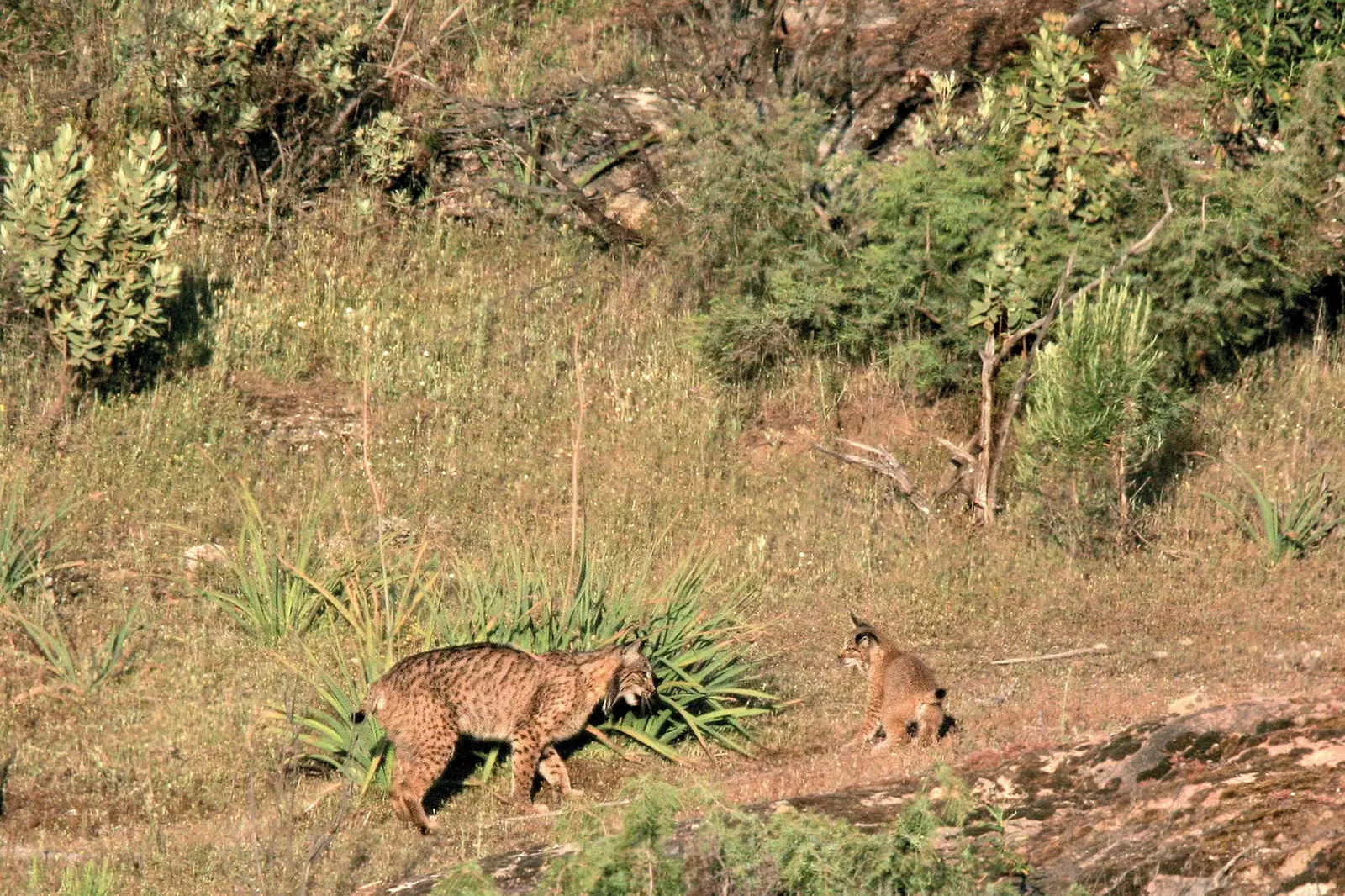
The CBD-Habitat Foundation is a non-profit NGO specialized in the conservation of the Iberian lynx and other species
While the safari starts aboard a 4x4, Carmen (CBD) explains to us that the key to the conservation of the lynx is actually the rabbit, since it is its main prey and most of its diet. “The farm is ideal for this animal: many open areas, a lot of bushes, high areas and a lot of grass, since there are no cattle that eat the grass. Many micro-ecosystems, which is what interests us”.
El Encinarejo currently hosts two female and two male Iberian lynx. Right now they should be raising the two to four pups (sometimes as many as six) they have a year. At the moment, the signs seem to indicate that we are on the right track to be able to see someone: there are footprints on the ground and the magpies do not stop singing (they warn each other when there is a predator nearby).
Indeed, as soon as we got out of the car we ran into a female just twenty meters away. It is magical to see how an animal that has acquired an almost mythological fame walks with its majesty.
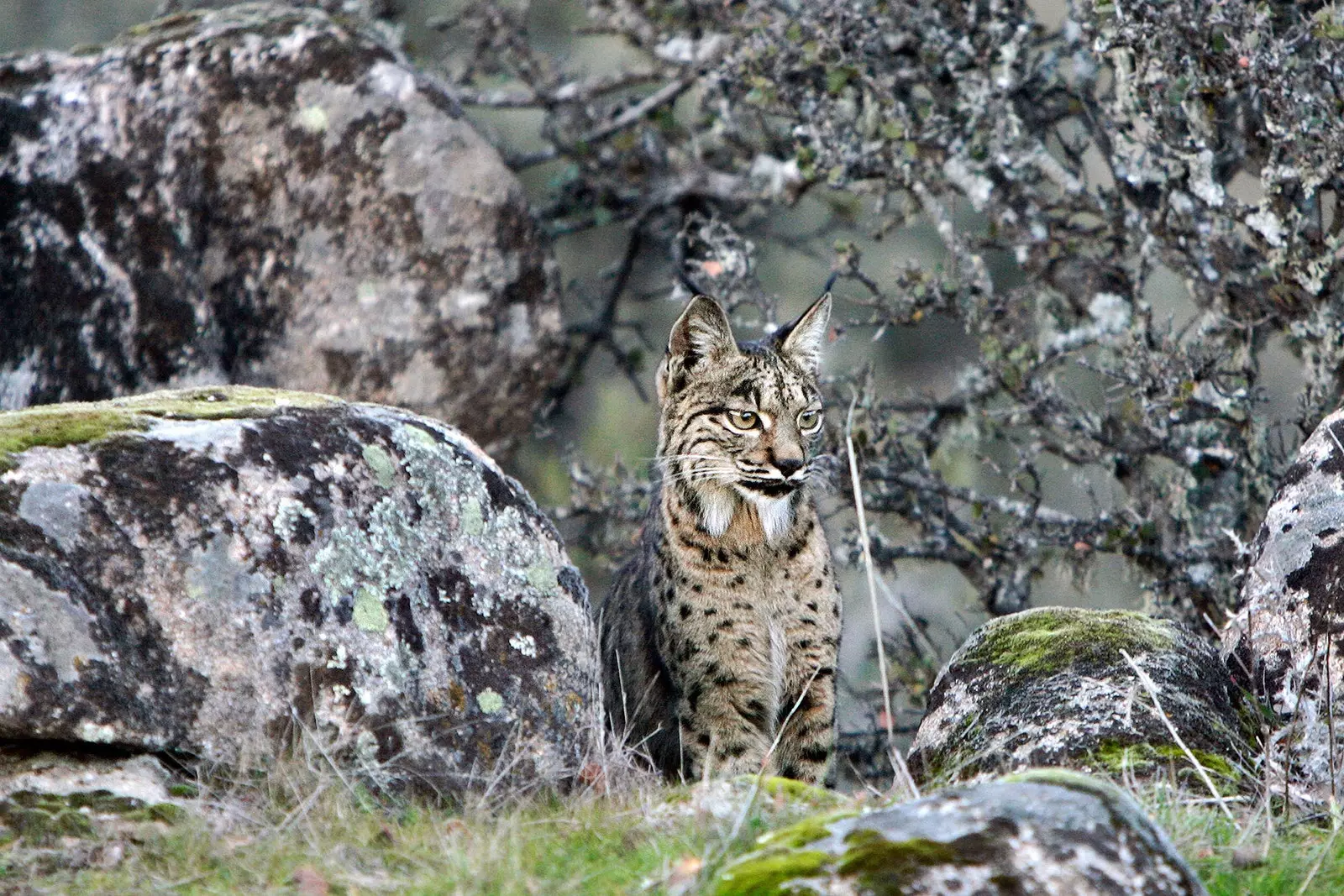
It is magical to see how an animal that has acquired an almost mythological fame walks with its majesty
It is about Nigeria (they are receiving the name depending on the letter that touches each year), who immediately lies down to rest in the shade of an oak. We will observe it through binoculars and telescopes that we wear for the occasion for a few minutes, before prudence advises us to stop bothering her.
“He doesn't behave like other small cats. If you approach it, it goes quietly but it doesn't run, does not run away from the human being. He relies on his camouflage, sometimes too much”, explains Samuel (CBD). Carmen points out that poaching “is not something generalized, although sometimes there are cases. Sometimes they kill it with a fox or rabbit trap, it depends on the area.”
Maribel adds that "there are areas where they still have a mentality from the middle of the last century" , reminding us that hunting with traps “is highly prohibited”. The technique of the Board was born in the town of Andújar, so it has seen how the conservation of the lynx has evolved in the area during these twenty years, becoming today a hallmark for the local population: "Before people were unaware of its existence, now they wear it with pride." In fact, they have erected a statue in his honor at the entrance to the town.
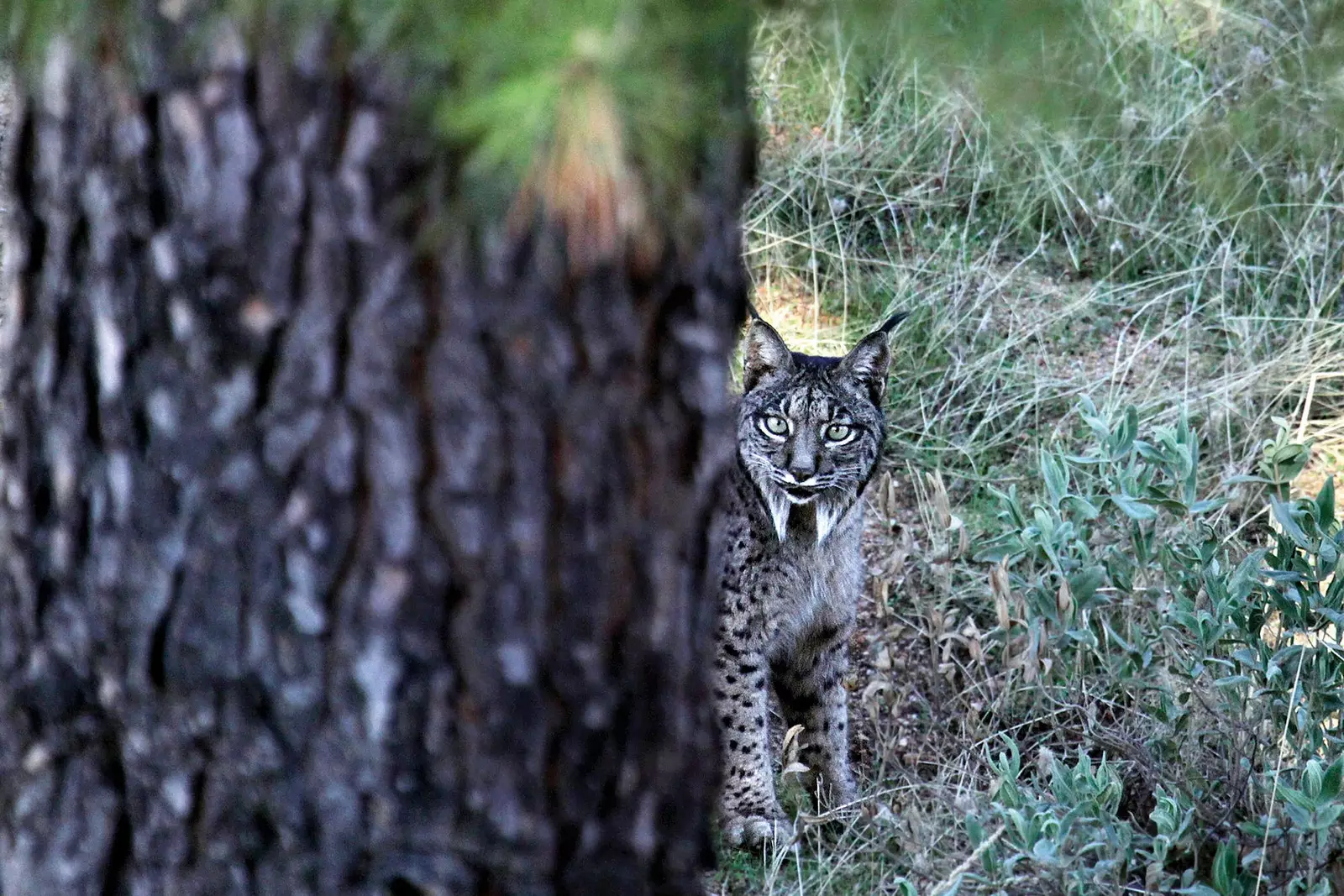
The Iberian lynx has become an 'umbrella species', whose protection also leads to the conservation of other species
It has also become quite a claim for outsiders: “The lynx has been a very important engine of development. Before there was only tourism in the monterías, twice a year. Now there is tourism all year round”.
This has made the vineyards (Old private farms for wine exploitation converted into rural houses today) along the A-6177 (road that crosses the Sierra de Andújar) are almost always rented. Especially in the high season, the months of January/February, when people come from practically all over the world to try to see the Iberian lynx.
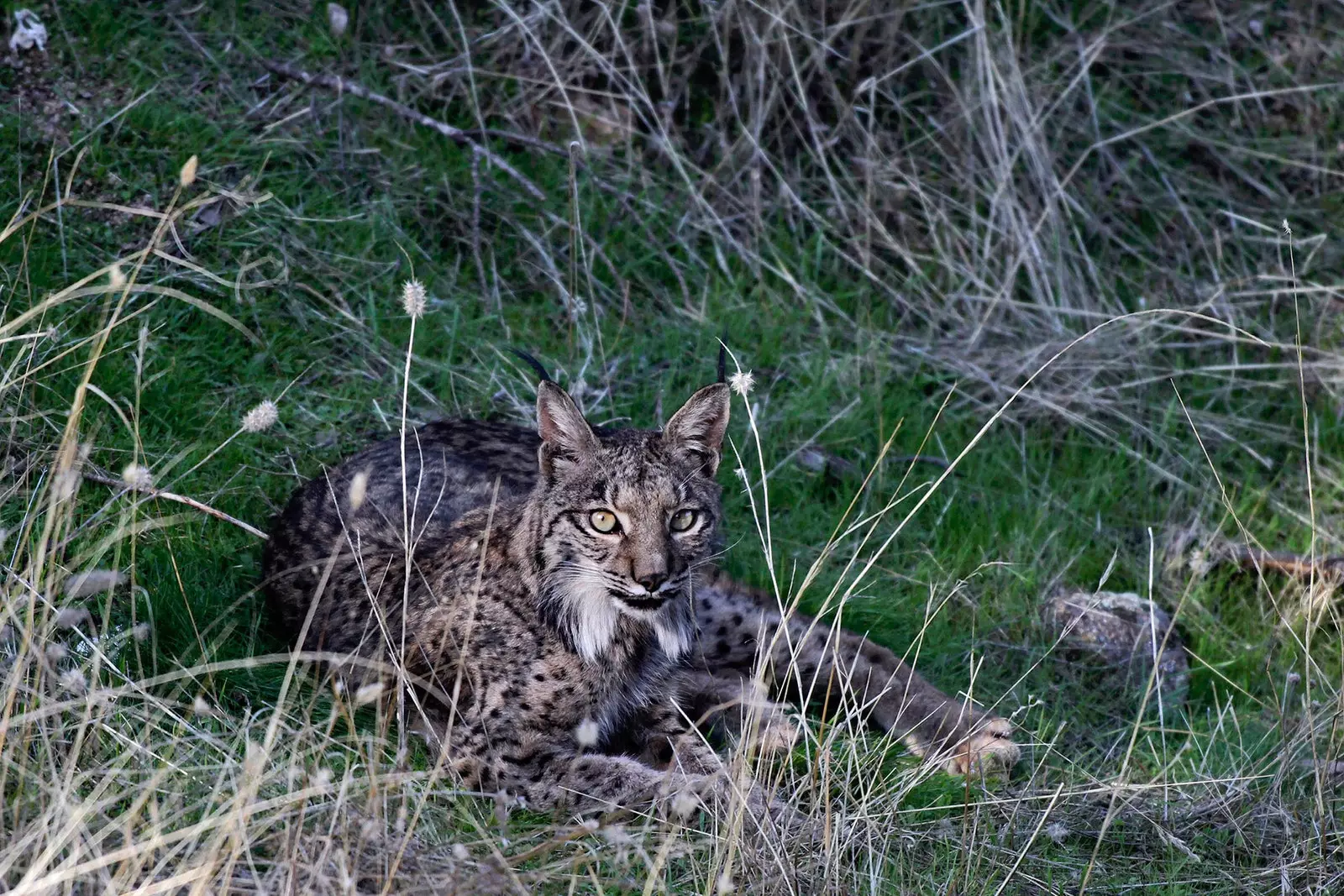
The home of the Iberian lynx
The same has happened with Los Pinos, an old roadside bar transformed today into an entire tourist complex with houses and rooms for rent.
We learn about its history from the hand of its owner, Ramón, while we dine in the restaurant with delicious dishes from his harvest: Partridge pâté with olive jam (house brand), fallow deer scallops with chips and trout endives with avocado and tomato.
There is the detour to the Jándula reservoir. A few kilometers later, a curve as a viewpoint is one of the public places where you can freely go to try to see the Iberian lynx, armed with binoculars, telescopes and infinite patience.
Carmen points out that, at certain times of the year, access to these public areas has had to be regulated since they are "beginning to become overcrowded." Another option is to use one of the many wildwatching companies that have emerged in the area, specializing in seeing the lynx.
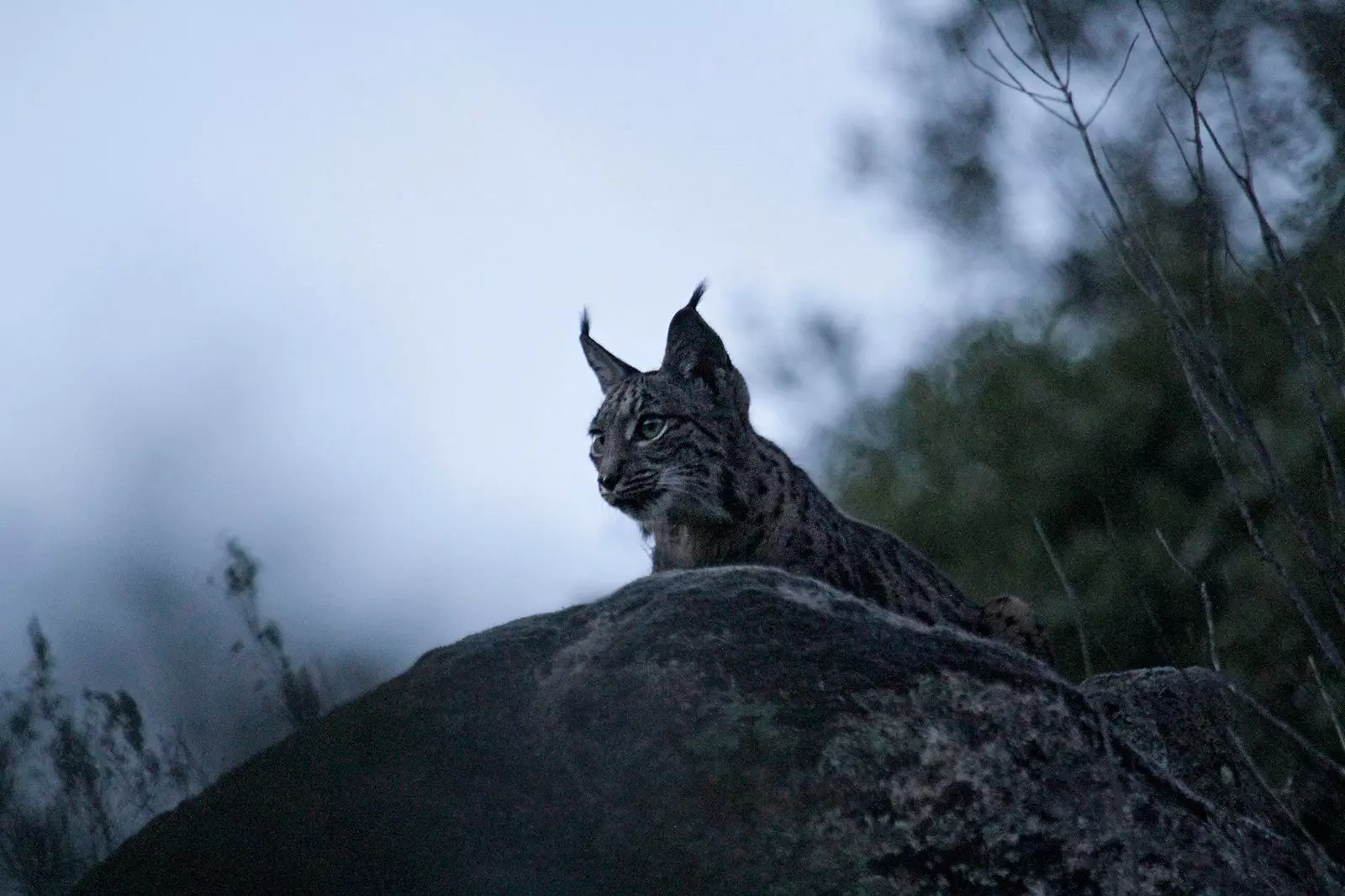
The Sierra de Andújar is home to some 500 species, half of the Iberian Peninsula
And it is that the Iberian lynx has become all an “umbrella species”, whose protection also leads to the conservation of other animal and plant species in its habitat.
But, as Maribel points out, In Andújar, the lynx “is also an umbrella species for people” since "the 'lyncero' tourism gives a lot of employment".
Good way for your survival, which however is not yet assured. The current wild population must be multiplied by at least five. The challenge: unite the current populations (Andújar, Extremadura, Doñana, Portugal, Castilla-La Mancha…) to achieve a genetic exchange that guarantees the future of the species.
